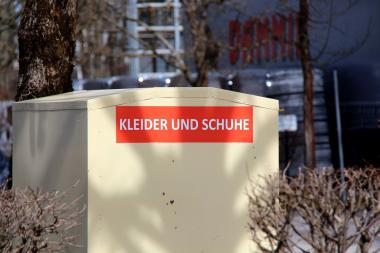Südwesttextil: Asiatische Online-Plattformen betreiben Preisdumping
Verband der Südwestdeutschen Textil- und Bekleidungsindustrie, Südwesttextil, sieht eine große Diskrepanz zwischen europäischen Standards und dem Geschäftsmodell von Online-Händlern aus Drittstaaten.
Am vierten Freitag im November ist es traditionell so weit – mit dem „Black Friday“ startet die Hochphase des Weihnachtsgeschäfts. Dies betrifft auch die Produkte der Textil- und Bekleidungsindustrie, die in Form von Heimtextilien oder Bekleidung gerne verschenkt werden. Die Unternehmen der baden-württembergischen Textil- und Bekleidungsindustrie setzen bei ihren Produkten auf einen hohen Design-, Qualitäts- und Funktionsanspruch und im Rahmen ihres Weihnachtsgeschäfts auf seriöse Kaufanreize, auch am Black Friday.
Aktuelle Verbraucherumfragen, darunter die des Kölner Handelsforschungsinstituts IFH, zeigen aber eine geringere Relevanz des Aktionstags und dies nicht etwa aufgrund eines höheren Nachhaltigkeitsbewusstseins auf Verbraucherseite. Grund seien stattdessen die ganzjährigen Dauerniedrigpreise von Online-Händlern aus dem asiatischen Raum. Der europäische Markt werde aktuell mit Billigware dieser Plattformen überflutet und allein aufgrund der schieren Menge, der oft unter Nutzung der Zollfreigrenze von 150 Euro versandten Pakete, sei eine Marktüberwachung kaum möglich. Die Plattformen arbeiteten zudem mit Kampfpreisen und glücksspielähnlichen Marketingaktionen. Zuletzt hat die EU-Kommission den Online-Marktplatz Temu aufgefordert, seine Verkaufspraktiken in Einklang mit dem EU-Verbraucherrecht zu bringen.
Südwesttextil hatte bereits im September klare Regeln sowie schärfere Kontrollen und Regulierungen gegenüber außereuropäischen Online-Handelsplattformen gefordert, um einen fairen Wettbewerb zu sichern.
Vor dem Hintergrund der aktuellen Umfragen betont Hauptgeschäftsführerin Edina Brenner: „Die Verbraucherwahrnehmung zeigt, welche Auswirkungen Dumpingpreise auf die Preiswahrnehmung der Endkundinnen und Endkunden haben. Wir brauchen eine konsequente Anwendung und Kontrolle der EU-Standards in den Bereichen Menschenrechte, Umwelt, Produktsicherheit sowie der Vorschriften im Bereich Verbraucherrecht, Zoll und Steuern. Während die europäischen Unternehmen im Bürokratiestrudel ertrinken, überschwemmen die außereuropäischen Online-Plattformen den Markt im Rahmen eines ganzjährigen Black Fridays.“
Black Friday Onlineplattformen Preisdumping Verband der Südwestdeutschen Textil- und Bekleidungsindustrie Südwesttextil e.V.
Verband der Südwestdeutschen Textil- und Bekleidungsindustrie

































